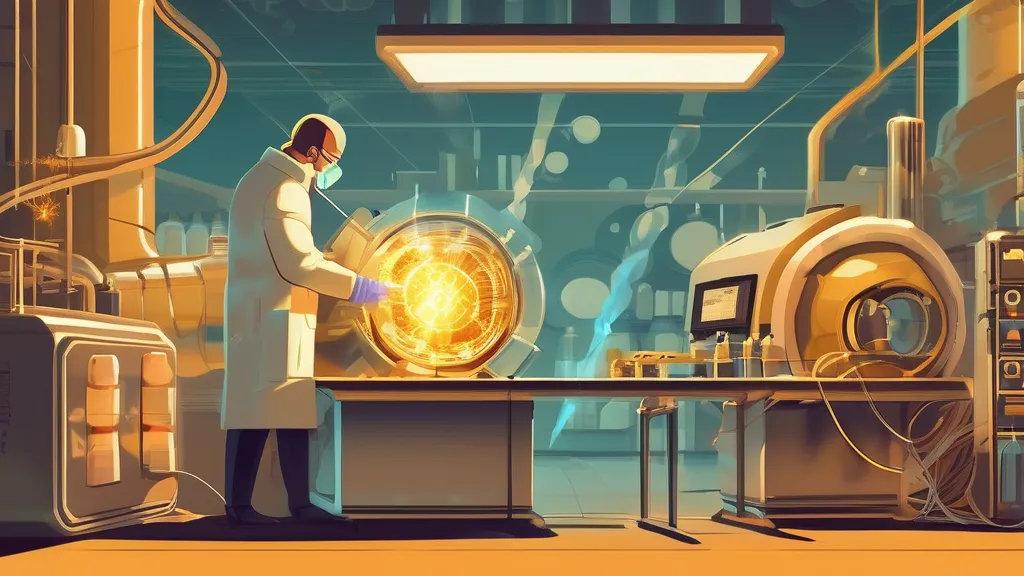Breaking the Boundaries of Physics: How Superheated Gold is Reshaping Our Understanding of Matter
A Revolutionary Experiment at SLAC National Accelerator Laboratory

- SLAC scientists superheated gold to 14 times its boiling point.
- The experiment challenges long-standing models in physics.
- Potential applications include spaceflight and nuclear chemistry.
- New technique allows direct measurement of temperature in extreme states.
Introduction: The Unthinkable Experiment
In a world where scientific theories often stand unchallenged for decades, a groundbreaking experiment at the SLAC National Accelerator Laboratory has done the unthinkable: it has shattered a long-standing model in physical chemistry. By superheating gold to 14 times its boiling point, scientists have ventured into uncharted territory, challenging our understanding of matter’s fundamental properties. This experiment, detailed in a recent publication in Nature, has not only pushed the boundaries of physics but also opened up a world of potential applications in fields as diverse as spaceflight, astrophysics, and nuclear chemistry.
The Experiment: A Two-Pronged Approach
The researchers at SLAC employed a two-pronged experimental approach. First, they used a giant laser to superheat a sample of gold, effectively suppressing the metal’s natural tendency to expand when heated. This technique, known as superheating, allowed the gold to exist in a peculiar limbo between solid and liquid states. Next, they deployed ultrabright X-rays to bombard the gold samples. By analyzing the distortions in the X-ray frequencies after colliding with gold particles, the team was able to determine the speed and temperature of the atoms.
This process revealed that gold could be heated up to a staggering 33,740 degrees Fahrenheit (18,726 degrees Celsius), far exceeding the theoretical limit of three times its boiling point. “We looked at the data, and somebody just said, ‘Wait a minute. Is this axis correct? That’s… really hot, isn’t it?’” recounted Thomas White, the study’s lead author and physicist at the University of Nevada, Reno, during a video call with Gizmodo.
Challenging Established Theories
The implications of this experiment are profound. Conventional wisdom in physics posits that structures like gold cannot be heated beyond a certain threshold without undergoing an “entropy catastrophe”—a state where the material would disintegrate or “blow up.” The researchers themselves were initially skeptical of surpassing this limit. However, the results have unequivocally demonstrated that the theoretical predictions were not only met but exceeded by a considerable margin.
Bob Nagler, the study’s senior author and staff scientist at SLAC, explained the significance of this finding: “Actually, it’s a funny thing; temperature is one of the physical quantities that humans have known for the longest time—but we don’t measure temperature itself. We measure something that temperature influences.” This experiment has, for the first time, provided a direct way to measure the temperature of matter in extreme states—an advancement that could revolutionize our understanding of hot, dense matter.
Applications and Implications
The potential applications of this breakthrough are vast. From a practical standpoint, understanding the temperature of matter in extreme conditions could significantly enhance our ability to study and manipulate systems like the center of a star, the nose cone of a spaceship, or the insides of a fusion reactor. These systems often operate on temperature-dependent variables that are notoriously difficult to gauge.
At the National Ignition Facility, for example, gold cylinders are used to contain nuclear fusion experiments. By firing X-rays at these cylinders, researchers drive the fusion reactions. “But we’re also thinking of doing directly fusion-related experiments now,” White noted. “To recreate fusion conditions, or the materials that make the fusion reactors, and just measure their temperature—which, actually, has been a long-standing question [in physics].”
The team is now extending their technique to other materials, such as silver and iron, and early results are promising. Over the coming months, the researchers will be analyzing these findings to further unravel the mysteries of matter at extreme temperatures.
Counterarguments and Skepticism
While the results are undeniably exciting, it is essential to approach them with a degree of skepticism. Some critics might argue that the conditions under which the gold was superheated do not accurately represent real-world scenarios. The superheated state lasted for only a few trillionths of a second before the gold disintegrated. However, as White pointed out, this duration is “long enough to be interesting.”
Moreover, replicating these conditions in a controlled laboratory environment might not directly translate to practical applications. The extreme temperatures achieved in the experiment may still pose significant challenges in terms of containment and energy efficiency.
Conclusion: A New Frontier in Physical Chemistry
The SLAC experiment has not only challenged the established norms of physics but also opened up a new frontier in physical chemistry. By demonstrating that gold can be superheated beyond previously accepted limits, the researchers have provided valuable insights into the fundamental properties of matter.
As the team continues to explore the applications of this breakthrough, the scientific community eagerly anticipates further developments. Whether in the realm of space exploration, nuclear fusion, or understanding the universe’s most extreme environments, the potential is immense.
In conclusion, this experiment serves as a reminder of the ever-evolving nature of science. As we continue to push the boundaries of human knowledge, we must remain open to challenging established norms and embracing new possibilities. What other mysteries might we unravel with this newfound understanding of superheated matter? Only time will tell.